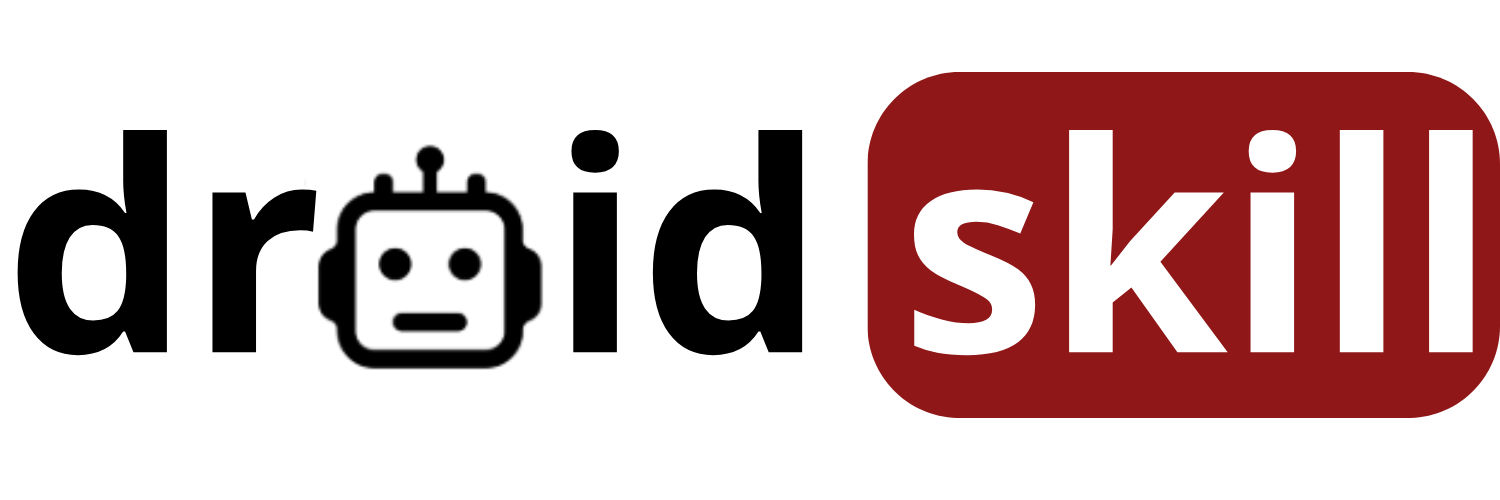In today's digital age, our smartphones have become indispensable tools, deeply integrated into our daily lives. They connect us, entertain us, and help us manage our schedules. However, this constant connectivity can also have a significant impact on our mental and physical well-being. Choosing the right mobile operating system, whether it's Android or iOS, can play a crucial role in fostering a healthier relationship with technology.
Both Android and iOS offer a plethora of features and functionalities designed to enhance our lives. However, they differ significantly in their approach to user experience, customization, and privacy. Understanding these differences is essential for making an informed decision that aligns with your individual needs and preferences.
This article delves into the key aspects of Android and iOS, exploring their strengths and weaknesses in relation to digital well-being. We'll examine how each platform can either contribute to or detract from a healthy lifestyle, providing you with the insights you need to make a conscious choice.
1. Forest: Stay Focused
Forest is a productivity app that helps you stay focused by gamifying the process of avoiding distractions. You plant a virtual tree when you want to concentrate, and if you leave the app before the timer is up, the tree dies. This visual representation of your focus encourages you to stay on task and avoid the temptation of social media or other distracting apps. It's a simple yet effective way to cultivate better focus habits and improve your overall productivity.
The app also offers features like whitelisting certain apps that you need for work or study, and tracking your focus time over days, weeks, and months. You can even plant trees with friends and family, creating a shared goal of staying focused together. Forest is a great tool for anyone who struggles with procrastination or wants to improve their concentration skills.
Download Forest: Stay Focused from Play Store
Search for Forest: Stay Focused on Play Store
2. Headspace: Meditation & Sleep
Headspace is a popular meditation and mindfulness app that offers guided meditations, sleep stories, and other resources to help you reduce stress, improve sleep, and cultivate a greater sense of well-being. The app's user-friendly interface and engaging content make it accessible to both beginners and experienced meditators. Headspace provides a variety of meditation courses tailored to different needs, such as managing anxiety, improving focus, and building self-esteem.
Beyond meditation, Headspace also offers sleepcasts, which are calming audio stories designed to help you fall asleep. These stories feature soothing voices and relaxing soundscapes that create a peaceful atmosphere conducive to sleep. The app also includes sleep meditations and sleep music to further enhance your sleep quality. Headspace is a comprehensive tool for improving your mental and emotional health through mindfulness and relaxation techniques.
Download Headspace: Meditation & Sleep from Play Store
Search for Headspace: Meditation & Sleep on Play Store
3. Calm
Calm is another leading meditation and mindfulness app that offers a wide range of resources to help you manage stress, improve sleep, and enhance your overall well-being. Similar to Headspace, Calm provides guided meditations, sleep stories, and relaxing music. However, Calm also distinguishes itself with its focus on nature sounds and scenes, creating a tranquil and immersive experience.
Calm offers a variety of meditation programs tailored to different needs, such as managing anxiety, improving focus, and building self-esteem. The app also features sleep stories narrated by celebrities, which can be a particularly appealing option for those who struggle to fall asleep. Calm's Daily Calm meditation provides a new guided meditation each day, offering a fresh perspective and helping you establish a consistent mindfulness practice. With its emphasis on relaxation and nature, Calm is a great choice for those seeking a peaceful and calming experience.
4. Freedom - Block Distracting Apps & Websites
Freedom is a powerful app that helps you block distracting apps and websites, allowing you to focus on your work, studies, or other important tasks. The app allows you to create custom blocklists of apps and websites that you find distracting, and then schedule blocks to prevent you from accessing them during specific times. Freedom can be particularly useful for those who struggle with procrastination or find themselves constantly checking social media or other distracting websites.
Freedom offers a variety of features to help you stay focused, including the ability to block apps and websites across all your devices, schedule recurring blocks, and create custom blocklists for different activities. The app also provides insights into your usage patterns, allowing you to identify your biggest distractions and make informed decisions about how to manage your time. Freedom is a valuable tool for anyone who wants to take control of their digital habits and improve their productivity.
Download Freedom - Block Distracting Apps & Websites from Play Store
Search for Freedom - Block Distracting Apps & Websites on Play Store
5. Digital Wellbeing (Google) / Screen Time (iOS)
Digital Wellbeing (on Android) and Screen Time (on iOS) are built-in features that provide insights into your device usage and allow you to set limits on your app usage. These features track how much time you spend on your phone, which apps you use most often, and how many notifications you receive. This information can help you become more aware of your digital habits and identify areas where you may want to make changes.
Both Digital Wellbeing and Screen Time allow you to set daily time limits for specific apps, which can be a helpful way to reduce your usage of distracting apps. You can also set a bedtime schedule that dims your screen and silences notifications, helping you wind down before sleep. These features provide valuable tools for managing your digital well-being and creating a healthier relationship with your phone.
Download Digital Wellbeing (Google) from Play Store
Search for Digital Wellbeing (Google) on Play Store
Android: Customization and Control
Android's open-source nature allows for a high degree of customization. Users can personalize their devices with custom launchers, widgets, and themes, creating a unique experience tailored to their individual preferences. This level of control can be beneficial for digital well-being, as users can customize their devices to minimize distractions and promote focus.
For example, you can use a minimalist launcher that hides distracting apps or widgets, or you can customize your notification settings to reduce the number of interruptions you receive. Android also offers a wide range of third-party apps designed to promote digital well-being, such as app blockers, focus timers, and mindfulness apps. The flexibility of Android allows you to create a digital environment that supports your goals and promotes a healthier relationship with technology.
iOS: Simplicity and Focus
iOS, on the other hand, is known for its simplicity and ease of use. The platform's streamlined interface and intuitive design make it easy to navigate and use. This simplicity can be beneficial for digital well-being, as it reduces the cognitive load and makes it easier to focus on the task at hand.
iOS also offers a range of features designed to promote digital well-being, such as Screen Time, which allows you to track your device usage and set limits on your app usage. The platform's focus on privacy and security can also contribute to a sense of well-being, as users can feel confident that their data is protected. While iOS offers less customization than Android, its simplicity and focus can be appealing to those seeking a less distracting and more streamlined digital experience.
Notifications: A Double-Edged Sword
Notifications are a crucial aspect of smartphone usage, keeping us informed about important events and updates. However, they can also be a major source of distraction, constantly interrupting our focus and pulling us away from our tasks. Both Android and iOS offer granular control over notifications, allowing you to customize which apps can send notifications and how those notifications are displayed.
To promote digital well-being, it's essential to carefully manage your notifications. Consider disabling notifications for apps that are not essential, and customize the notification settings for important apps to minimize distractions. For example, you can choose to receive notifications only for direct messages or mentions, rather than for every like or comment. By taking control of your notifications, you can reduce the number of interruptions you receive and improve your ability to focus.
The Importance of Mindful Usage
Ultimately, the impact of Android or iOS on your digital well-being depends on how you use your device. Even with the best features and apps, it's still possible to develop unhealthy digital habits. Mindful usage is key to fostering a healthy relationship with technology. This means being aware of how you're using your phone, setting boundaries for your usage, and taking breaks from technology when needed.
Consider setting specific times for checking your email or social media, and avoid using your phone in bed or during meals. Engage in activities that don't involve technology, such as reading, spending time with loved ones, or pursuing hobbies. By practicing mindful usage, you can reduce the negative impact of technology on your well-being and create a more balanced and fulfilling life.
Beyond the Operating System: Healthy Digital Habits
While choosing the right mobile operating system can contribute to your digital well-being, it's important to remember that it's just one piece of the puzzle. Developing healthy digital habits is crucial for fostering a positive relationship with technology. Here are some additional tips to consider:
- Set boundaries: Establish specific times for using your phone and stick to them.
- Take breaks: Regularly step away from your phone and engage in activities that don't involve technology.
- Create a phone-free zone: Designate certain areas of your home, such as your bedroom, as phone-free zones.
- Be mindful of your usage: Pay attention to how you're using your phone and identify any unhealthy patterns.
- Practice digital detox: Take regular breaks from all technology, such as a weekend or a week.
Conclusion: Making an Informed Choice
Choosing between Android and iOS is a personal decision that depends on your individual needs and preferences. Both platforms offer features and functionalities that can either contribute to or detract from your digital well-being. By understanding the strengths and weaknesses of each platform, and by developing healthy digital habits, you can make an informed choice that supports your goals and promotes a healthier relationship with technology.
Consider your priorities when making your decision. If you value customization and control, Android may be a better choice. If you prefer simplicity and ease of use, iOS may be a better fit. Regardless of which platform you choose, remember that mindful usage is key to fostering a healthy relationship with technology. By setting boundaries, taking breaks, and being aware of your usage patterns, you can create a digital environment that supports your well-being and enhances your life.
Ultimately, the goal is to use technology in a way that empowers you and enhances your life, rather than controlling you and detracting from your well-being. By making conscious choices about how you use your devices, you can create a healthier and more balanced relationship with technology.


